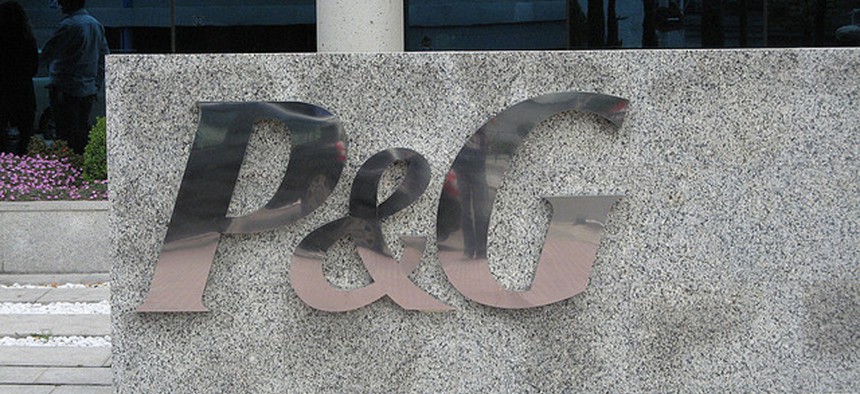
Flickr user equanimal
Can Government Adopt the P&G Philosophy?
VA nominee fostered a performance culture at Procter & Gamble.
Assuming Robert McDonald becomes the next secretary of Veterans Affairs, he will bring with him a philosophy that could be a wake-up call for government. He spent over 30 years in a company that values and invests in its workforce—Procter & Gamble. Known for its commitment to providing attractive careers, P&G counted more than 800,000 applicants in one recent year. It competes for talent with the world’s best companies. McDonald’s public statements while he was CEO confirm he was solidly committed to the P&G philosophy.
P&G appears high on a number of “best” lists: World’s Most Admired Employers; Top Companies for Diversity, for Executive Women, for Working Mothers; Most Reputable Companies; and No. 1 among the Best Companies for Leaders. Its ranking as an admired employer is based on surveys of new graduates in 12 countries.
On the website Glassdoor, P&G workers give their employer high marks; 88 percent would recommend the company to friends. Its employees are known to view themselves as “P&Gers for life.”
The company is known for its many products—Tide, Crest and Old Spice, to name a few—sold globally in highly competitive markets. In contrast to businesses that rely on lobbying or large contracts, P&G’s success depends on the day-to-day efforts of thousands of employees. This is also true for the Veterans Affairs Department.
P&G may not have as many employees as the VA, but it’s among the largest organizations, with roughly 125,000 employees and operations in 75 countries. The array of products and country-specific operational requirements makes it a complex management challenge.
This is a company that asserts in advertising that its “Purpose, Values and Principles” are the foundation of its culture. Maybe I’m reading too much into the statements, but the P&G values, “Integrity, Leadership, Ownership, Passion for Winning and Trust” are strikingly similar to the U.S. Army’s, “Loyalty, Duty, Respect, Selfless Service, Honor, Integrity and Personal Courage.” McDonald is a graduate of West Point.
Evident in P&G’s annual proxy statement is a strategy that emphasizes getting the best from employees. It starts with its values and principles, including “A Passion for Winning,” “We Value Personal Mastery” and “We Seek to Be the Best.” In an interview, McDonald said, “Any high performance organization must have four components: passionate leadership, sound strategies, robust systems and a high performance culture.” He also noted, “There will be some people in the organization who will not make it on the journey.”
The P&G focus on performance is reflected in its executive compensation program. The stated philosophy is based on three principles.
- “Pay competitively” by setting target compensation opportunities that rival other multinational corporations similar in size, marketing focus and complexity. The peer group comprises 25 companies like 3M, Kraft Foods and PepsiCo.
- “Emphasize pay for performance” by rewarding executives and managers with cash and stock awards. The proxy statement focuses on six corporate officers, but the annual incentive plan covers 14,000 executives and managers. Target awards are defined at each level.
- “Focus on long-term success” by including equity as a cornerstone of the program and by using incentives to ensure a strong connection between P&G performance and individual compensation.
While P&G pay levels are far from modest by government standards, they are solidly in line with industry norms. McDonald’s P&G salary, for example, was roughly half the amount paid to one of the early candidates—Cleveland Clinic CEO, Dr. Delos Cosgrove.
The P&G compensation philosophy is heavily weighted to performance. Base salaries account for only 14 percent of total compensation. Cash compensation—salary and annual incentives—accounts for 34 percent, while stock-based compensation accounts for the remaining 66 percent. Significantly, even the primary retirement program invests the funds in P&G stock.
The design of the annual incentive plan is a possible model for government. All of the 14,000 plan participants have a target award, expressed as percentage of salary. Individual awards reflect company, business unit and individual performance relative to predetermined goals. Awards are determined by formula based on a weighted mix of quantitative and qualitative measures (e.g., innovation).
The company’s approach to managing performance could also be a model for government. In an interview on the McKinsey website, McDonald said:
“Every Monday morning we have a meeting with our leadership team all over the world—physically and virtually—where we review the business for the previous week and click down on all this data. And everyone signs up for the principles behind this—it’s real time and continuous; it gives us the ability to click down to find causality, make decisions and then move on.”
Similar meetings occur weekly or at least monthly in virtually every well-managed business. Performance relative to business goals is discussed, problems identified, corrective actions initiated and at year-end executives who achieve or exceed goals are rewarded. The meetings take place at every level.
That is very similar to the management approach and compensation philosophy in well-managed hospital systems. Increasingly, hospital systems have both annual and long-term incentive plans. A survey by the Hay Group reported that 63 percent of the larger systems had long-term incentive plans in place in 2013.
P&G’s executive board would never consider doing to its workforce what Congress has imposed on federal employees. In contrast, successful companies place considerable emphasis on maintaining employee commitment. Congress will now have to decide if its commitment to veterans will support McDonald in transforming the VA. In health care, employees and their work effort are key.
Howard Risher managed compensation consulting practices for two national firms. He has written four books, including Aligning Pay and Results (New York: AMACOMBooks, 1999). He has an MBA and Ph.D. from the Wharton School.
(Image via Flickr user equanimal)







